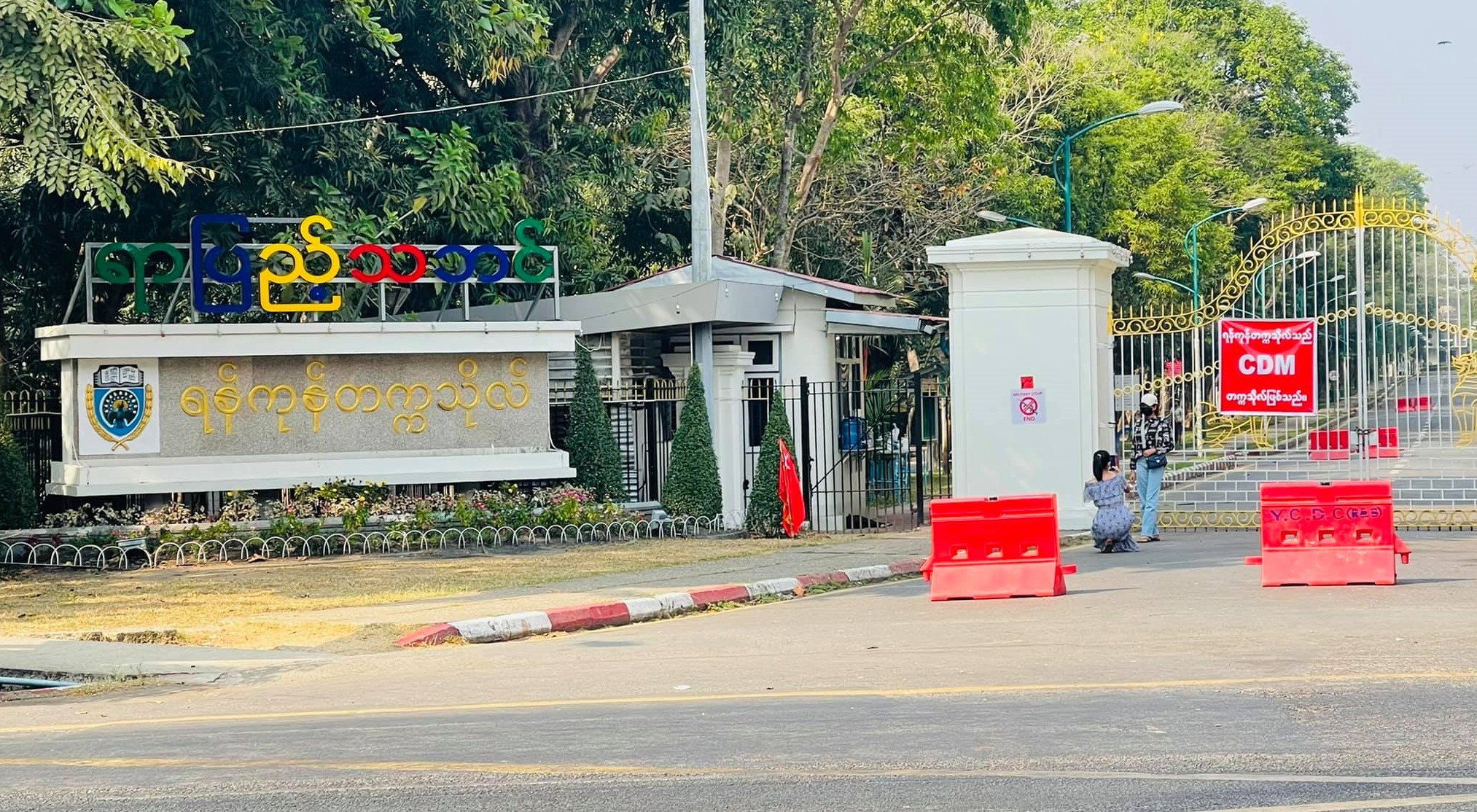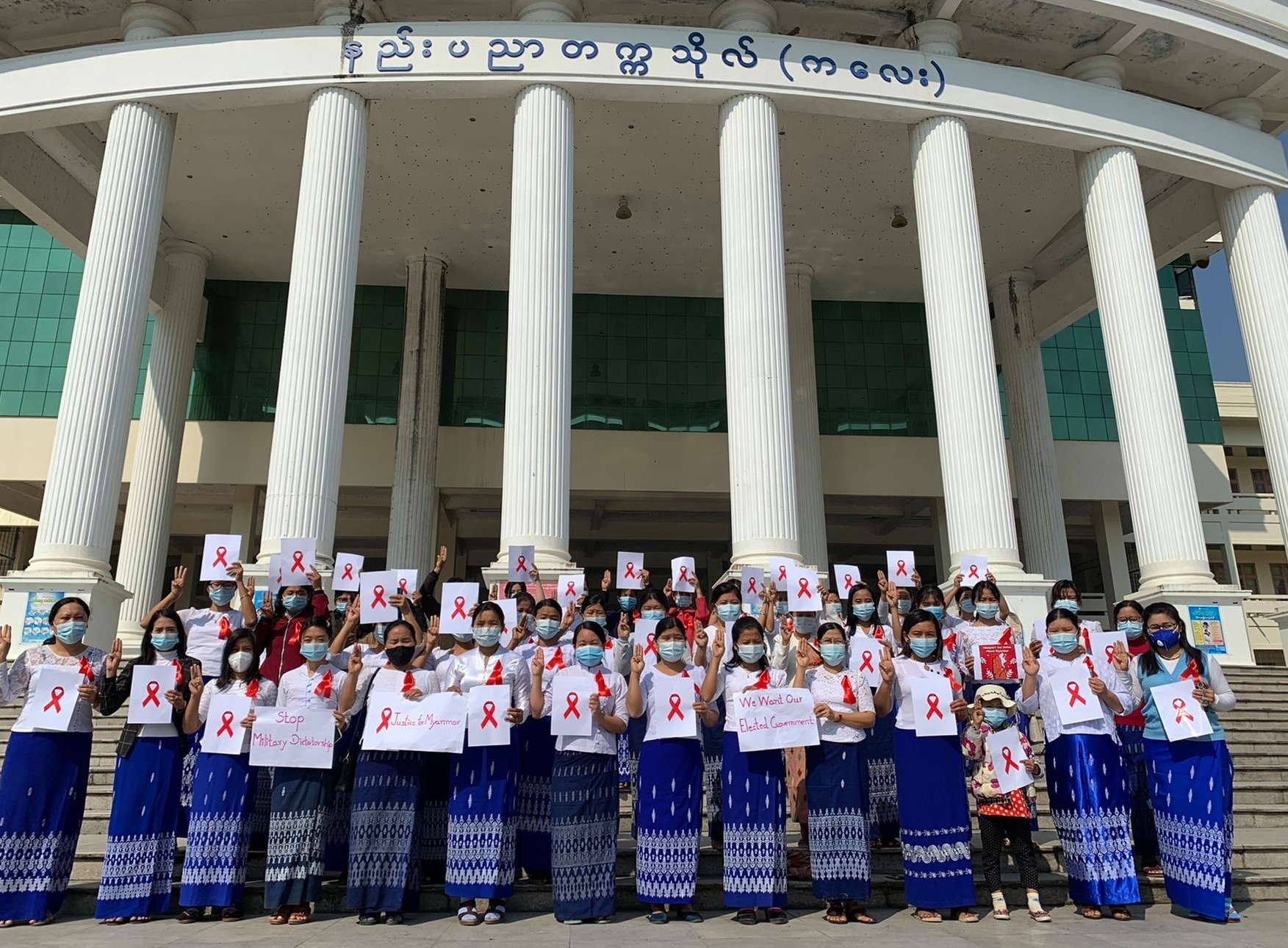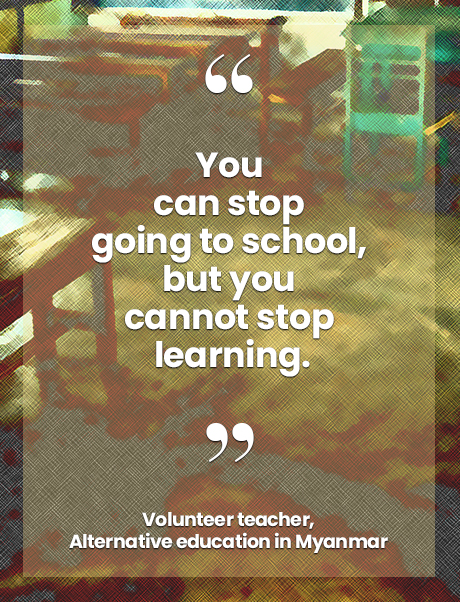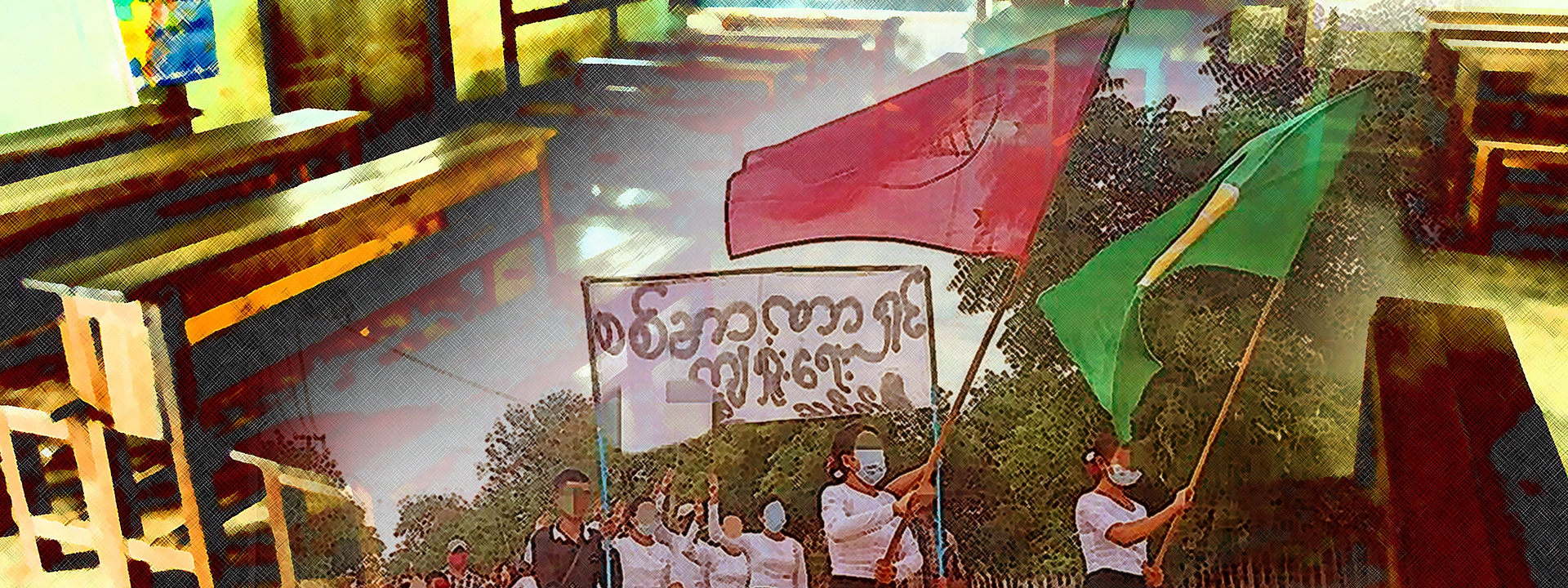Myanmar ’s military junta has announced another round of shutdowns for schools from 9 July to 23 July because of new worries over rising COVID-19 numbers. But many students and teachers across the country will be holding classes anyway.
In May and June, when the junta decided to allow in-class learning in all levels, thousands of students and teachers had not shown up at the state-run schools. Instead, they opted to continue on with the alternative education organized by Myanmar’s Civil Disobedience Movement (CDM).
Aside from battling COVID-19, Myanmar has been in political turmoil following a coup staged by the military last February that deposed the newly re-elected government led by Aung San Suu Kyi. An angry citizenry has been up in arms since, and the military has been busy running after protesters who simply will not accept the country’s new rulers. But while nearly 900 people have been killed so far in the military crackdown, resistance to the junta persists.
The leaderless CDM, for instance, has pressed on despite growing difficulties. Even its foray into alternative education has not been easy, but as one volunteer teacher remarks, “You can stop going to school, but you cannot stop learning.”
That the junta had suddenly allowed in-class learning just two months after seizing power and at the height of a pandemic had been seen as a cynical move by many Burmese, with some commenting that it was nothing but a show of control. Not surprisingly, classrooms in state-run schools were nearly empty, even at university level.
Many of the country’s youth, though, have been continuing their schooling – courtesy of the CDM. Some of those running such initiatives, in fact, say that education can be a weapon they can use against the junta. Sue Sue, a founder of one of the alternative schools, also says, “Without quality continuous education, children will not know what is right or what wrong. We will be left behind too much as a result.”

The University of Yangon, an institution that has played a central role in Myanmar’s protest movements through the decades, declared itself a Civil Disobedience Movement (CDM) school. (Photo supplied.)
Online, offline, and hybrids
The alternative schools encompass all levels, from elementary to university. Many use hybrid teaching or a combination of online and offline lessons. For those where internet connection is absent or unreliable, home-schooling is employed, with CDM educational organizations providing learning materials, and the parents-turned-teachers backed by community volunteers.
There are also CDM supporters who open small classes with five to 10 students from their own village or wards. A community education teacher says, “We, the graduates from teacher training colleges and education universities, built a network with each other and provide community-based education to the students who refused to the junta schools, in the assigned respective villages.”
University student Ko Naing also says, “As I want to support the CDM movement, I organized the children who did not go schools and started a class.”
When possible, however, online learning is preferred, as this is considered “safer”; identities of participants are less obvious as voices can be altered and one can always opt not to show one’s face.
“We never show our faces in the classroom,” says one CDM teacher, relating some of their security measures. “We even do not know who our teaching colleagues are as all of teaching staff’s information are strictly kept in the database and we have to sign (papers) not to reveal any internal information about our teams.”
“There are police who are tracing the information about us,” says a founder of one of the CDM schools. “They even ban our hotlines numbers. We are aware that our activities are quite dangerous. But we need to continue working, teaching and fundraising as there are many CDM staff who rely on us.”
Teacher Sue Sue, who conducts physical classes, says, “Two trucks of police came to my house and warned us not to organize the students. But I explained them I was teaching voluntarily for those who have no access to education.”
“Since that day,” she adds, “many parents do not allow their children to come and study in my school.” Nevertheless, Sue Sue has not closed her school and continues to hold classes for whoever shows up.

February 2021. Teachers from the Kalay Technological University (KTU) show their support for the Civil Disobedience Movement as they protest the military takeover of the government. (Photo by KTU)
New subjects added
The curricula of most of the CDM schools do not stray far from those found in the state-run institutions. But some add a few more subjects. For example, a teacher from Zee Kwat Academy says that aside from the basic curriculum, they offer computer science. In other CDM schools, civic education is a popular addition. Still others like the Free Online Education in Myanmar (FOEIM) have classes on ethnic culture, human rights, sexual health, and gender and sexual equality. These subjects are taught in all levels, but adjusted according to the students’ age group. One CDM teacher also shares, “Our school heads are giving us human rights, child social support, and civic education courses.” That way, continues the teacher, they can “share the civic education values and rights principles” with their own students later.
 Almost all of the CDM alternative education efforts are free, and the teachers and administrative staff work on voluntary basis. But the CDM has also begun initiatives aimed at raising money, primarily to help out government employees – among them teachers – who lost their jobs because of their participation in the CDM, as well as internally displaced persons (IDPs).
Almost all of the CDM alternative education efforts are free, and the teachers and administrative staff work on voluntary basis. But the CDM has also begun initiatives aimed at raising money, primarily to help out government employees – among them teachers – who lost their jobs because of their participation in the CDM, as well as internally displaced persons (IDPs).
One CDM stalwart recounts, “At first we had just a crowdfunding platform. But after three to four months, the donors seemed exhausted even as the government-turned-CDM staff still struggled to survive. So we decided to open classes that asked for admission fees and used the money for the CDM staff.” These “classes,” in fact, are university-level certificate courses.
No one really knows just how many students are availing of the CDM’s alternative education at present. But at least one institution – FOEIM – says that it already has 10,000 students spread across elementary and high school levels, and is aiming to double that number in the coming months.
Many of these initiatives are currently concentrated in the heart of urban and Burman majority areas, such as Yangon and Mandalay. There are plans to widen their reach, however. Kyaw Kyaw, a founder of an alternative education service, says that while their “target audience is still the ones who have access to stable internet,” they are trying to “connect with the local organizations and local youth networks in order to expand our services.” A founder of the Movement Institute also says, “We are now working on saving our lesson videos in memory sticks to send the remote communities.”
In the meantime, many of the CDM schools are starting to think about accreditation and recognition, and are looking toward the National Unity Government (NUG), the new parallel national administration set up by lawmakers deposed in the recent coup, for appropriate policies and guidance. A staff member of a home-schooling alternative education service says, “We hope NUG can announce the standard assessment program for the students who refused to go to junta schools so we can still teach the students and prepare them with these standards….We are now trying to work about the recognition with NUG. Alternatively, we are also preparing our students to take the international standard exam such as Cambridge tests.”
For sure, even mere attempts to connect with the NUG may land the CDM educators in the crosshairs of the junta. As it is, many of the CDM teachers and other alternative education staff confess to spells of anxiety and being gripped by fear at times. But they also say that they have yet to think about stopping what they are doing. Says Jewel, a volunteer teacher: “My family and I myself sometimes worried about my security. I know my risks. But I never think of ceasing to teach as there are many people who have sacrificed more for this revolution.” ●
Jesua Lynn is an independent researcher and peace-education trainer. He has authored and co-authored more than four publications in Myanmar in the fields of human rights, hate speech, youth activism, and peace-building.



















